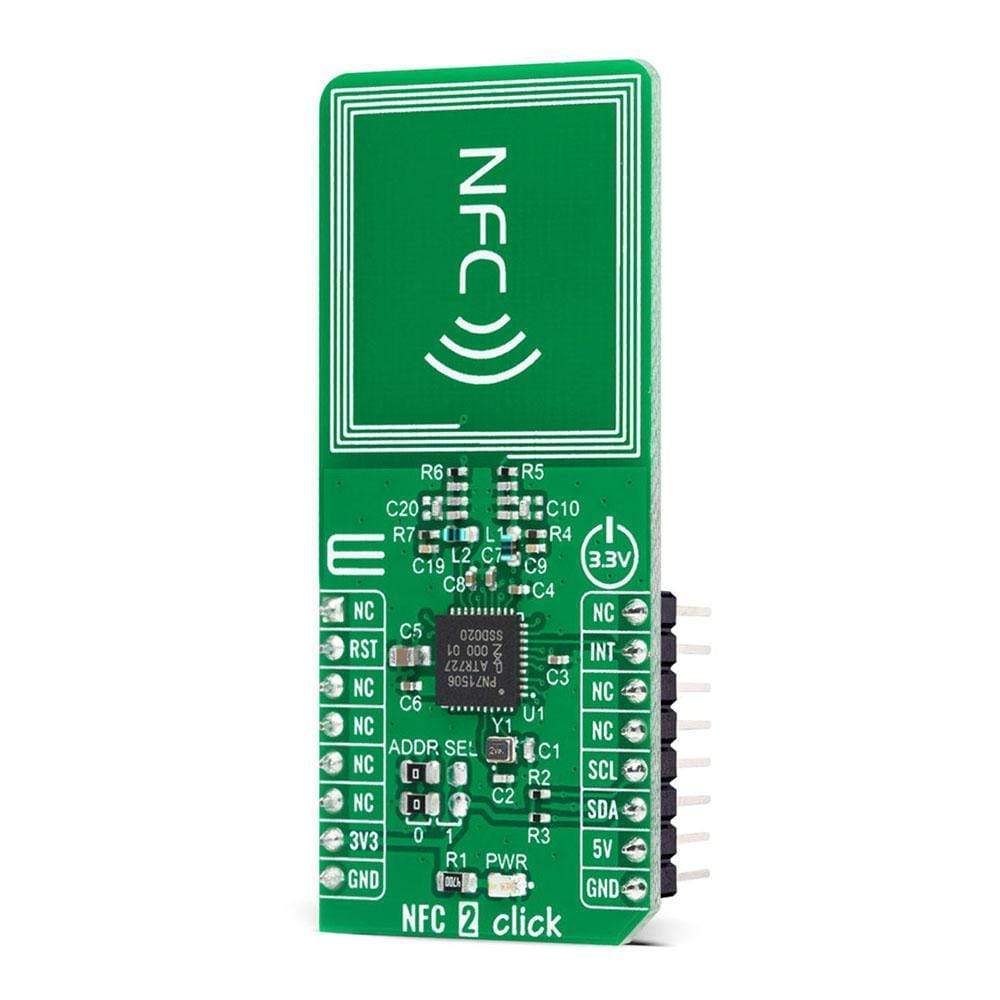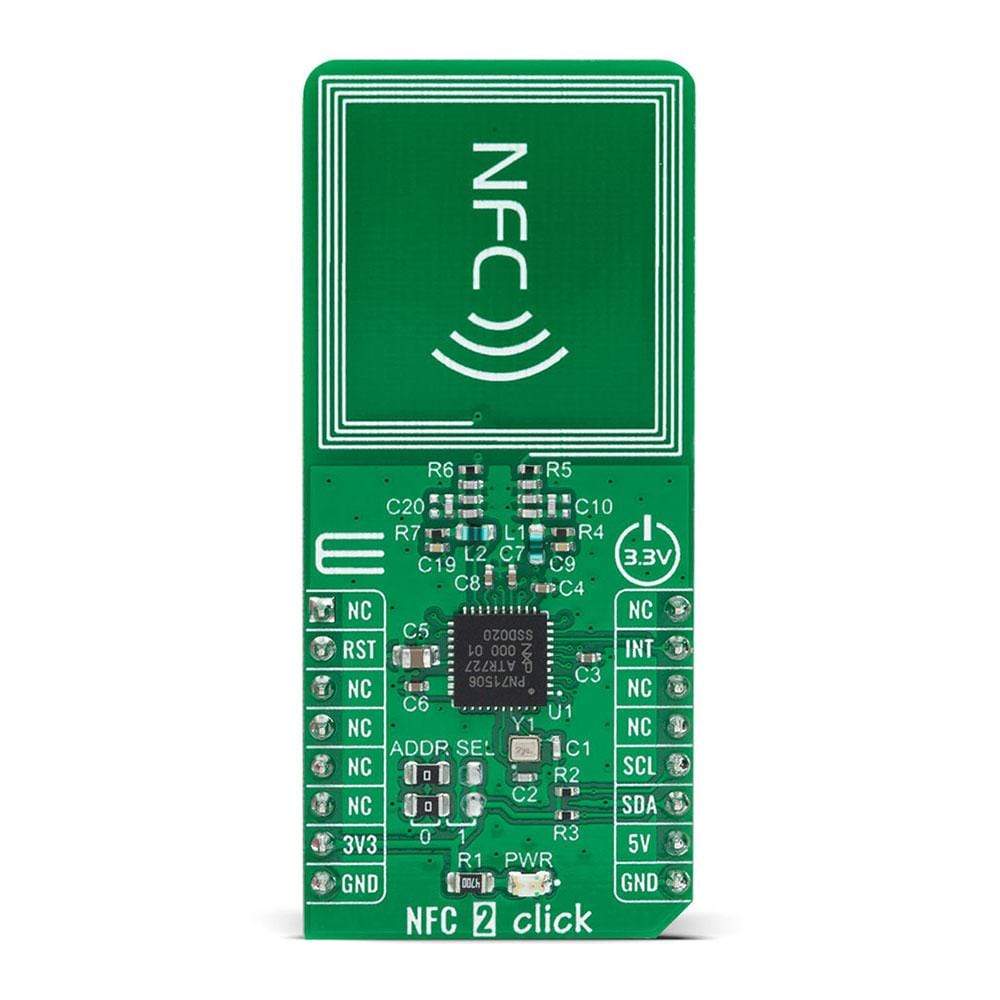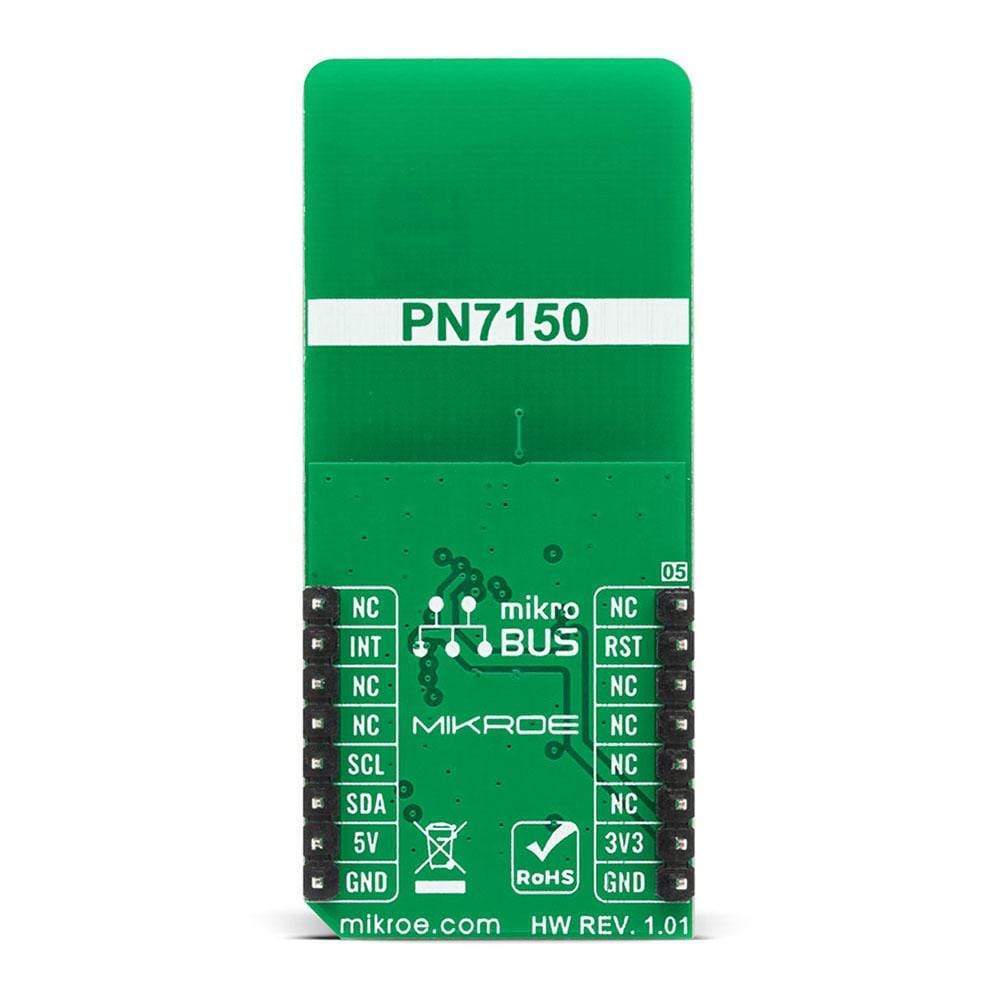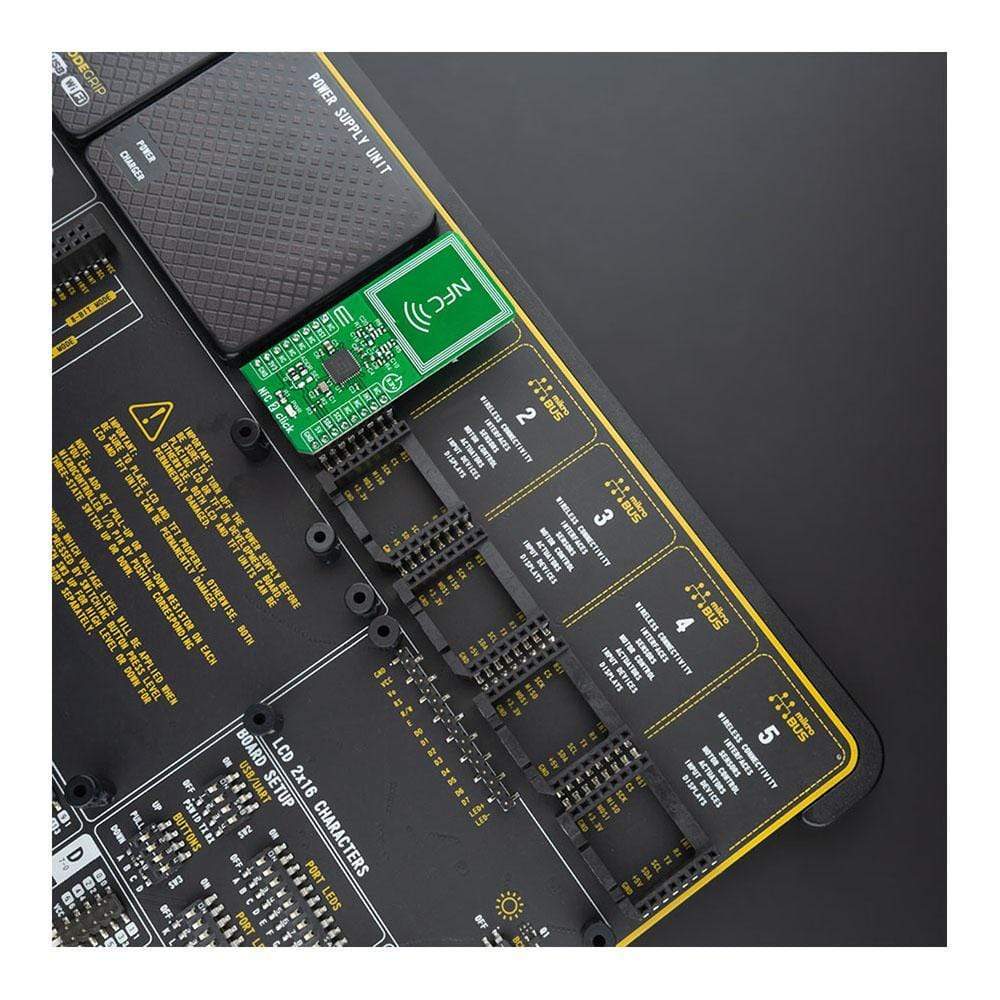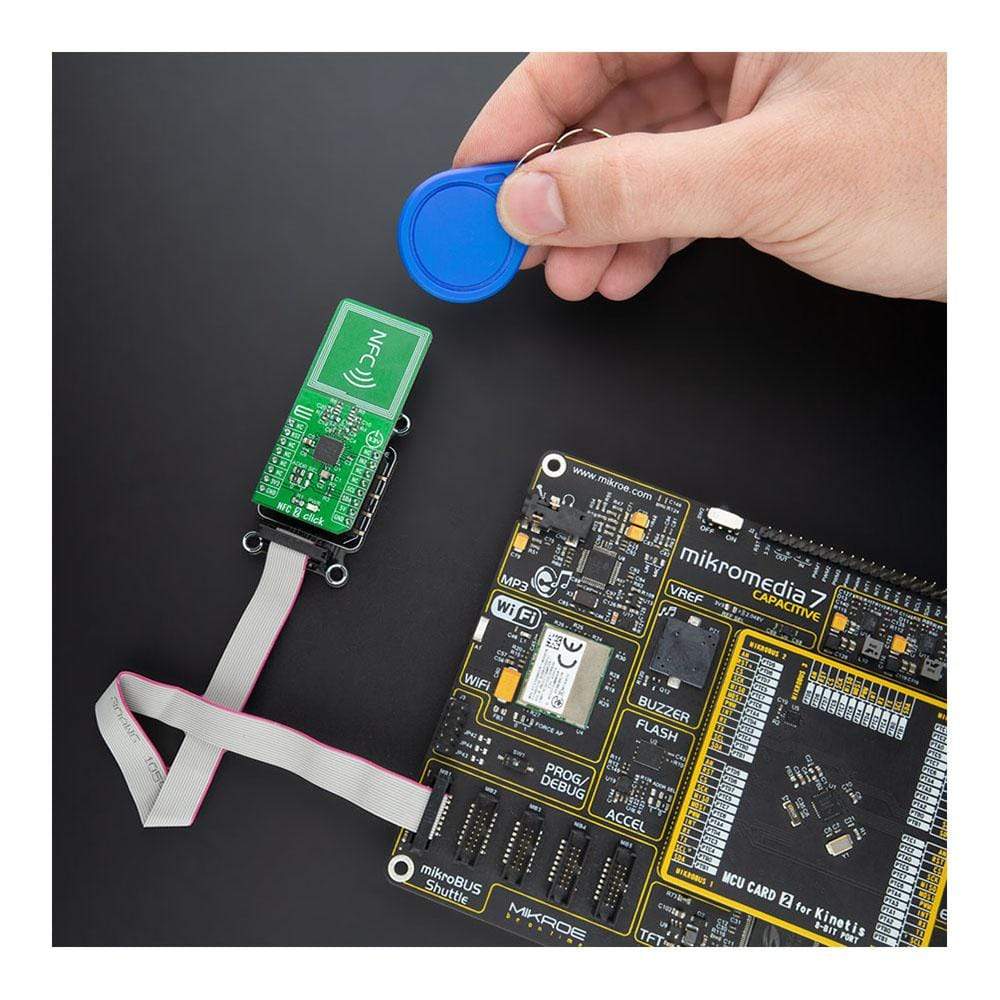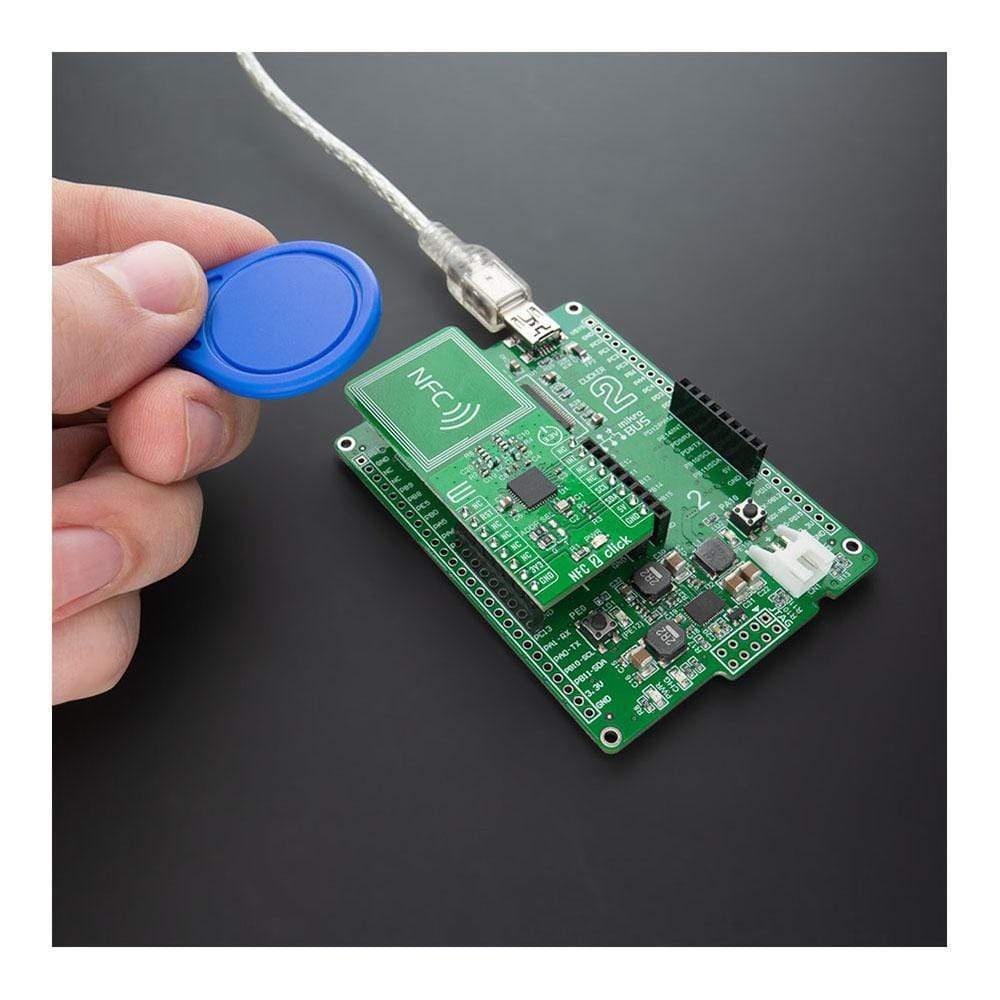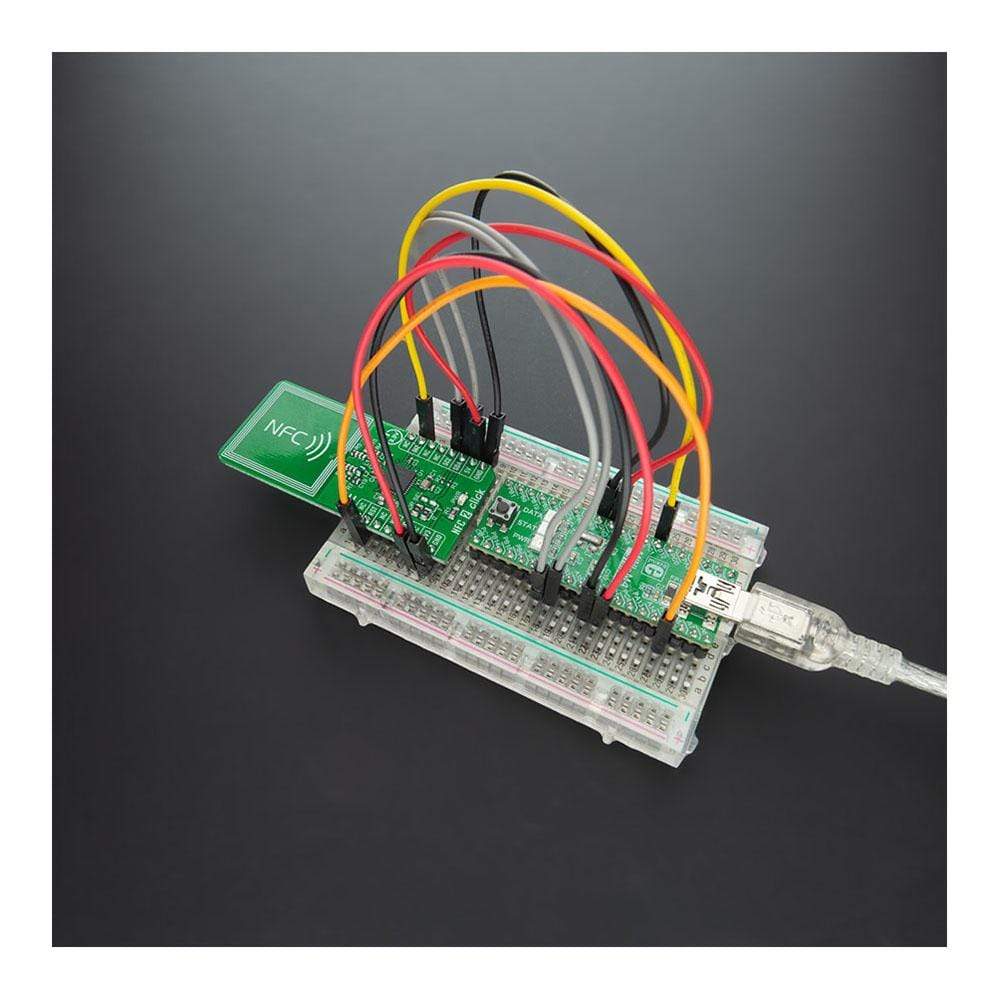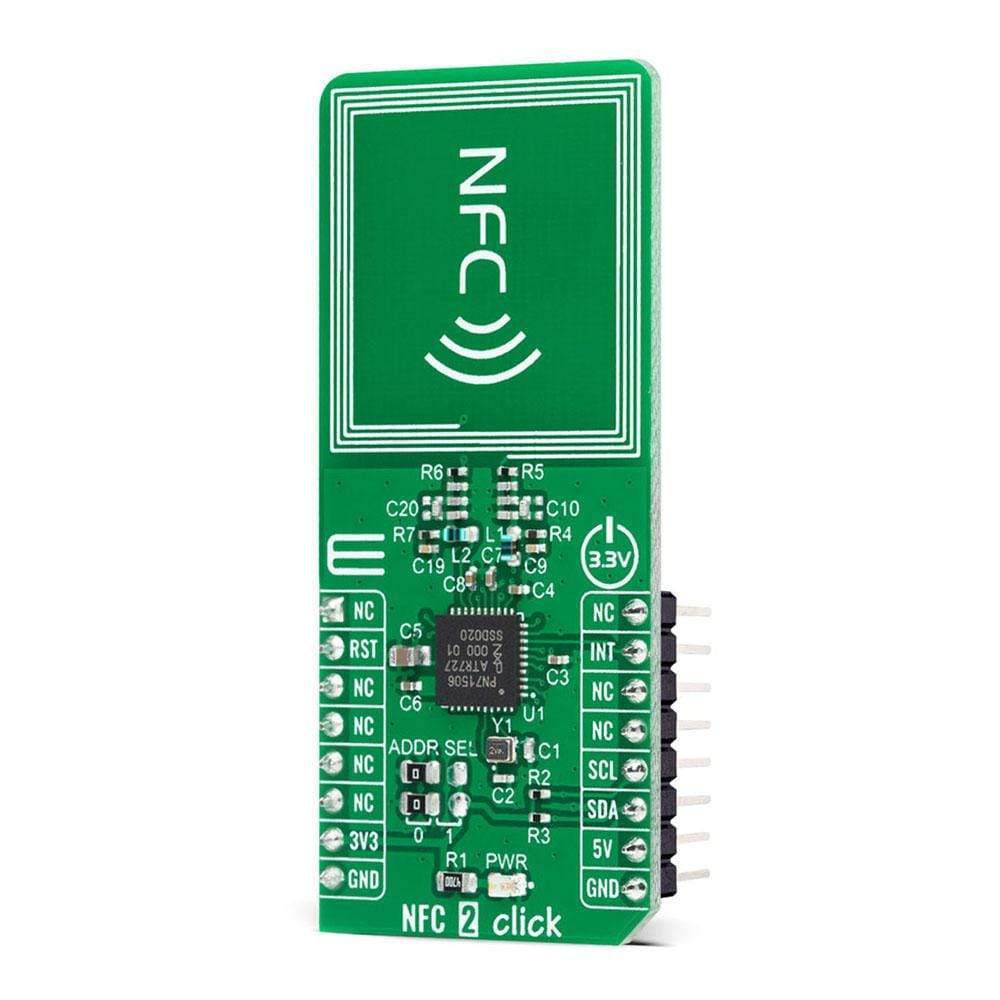
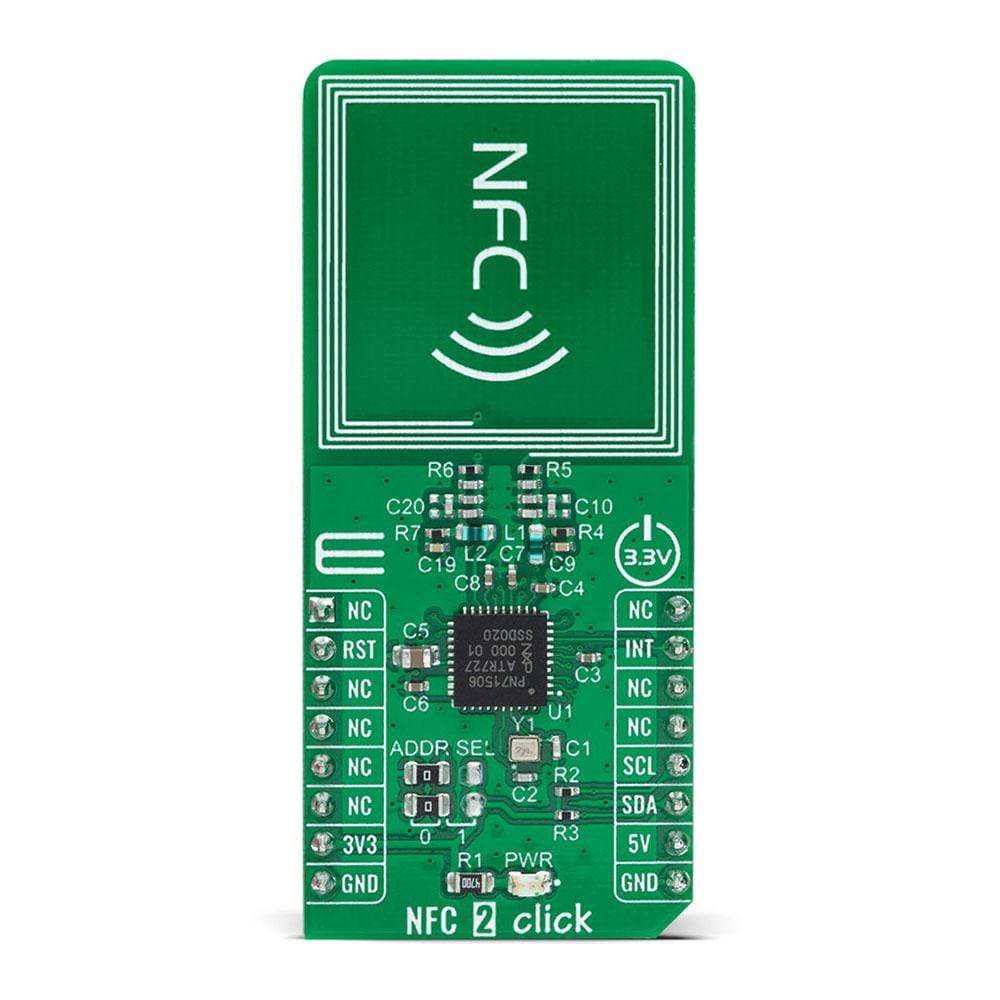
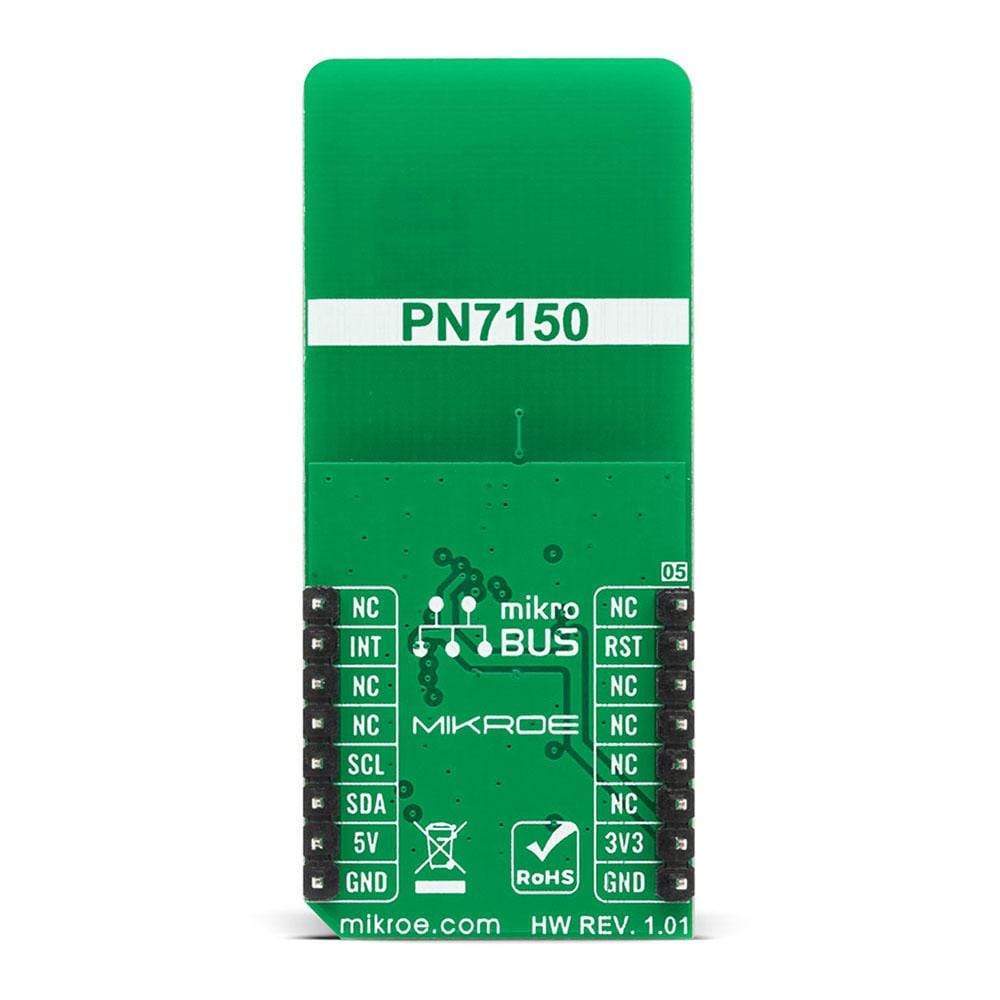
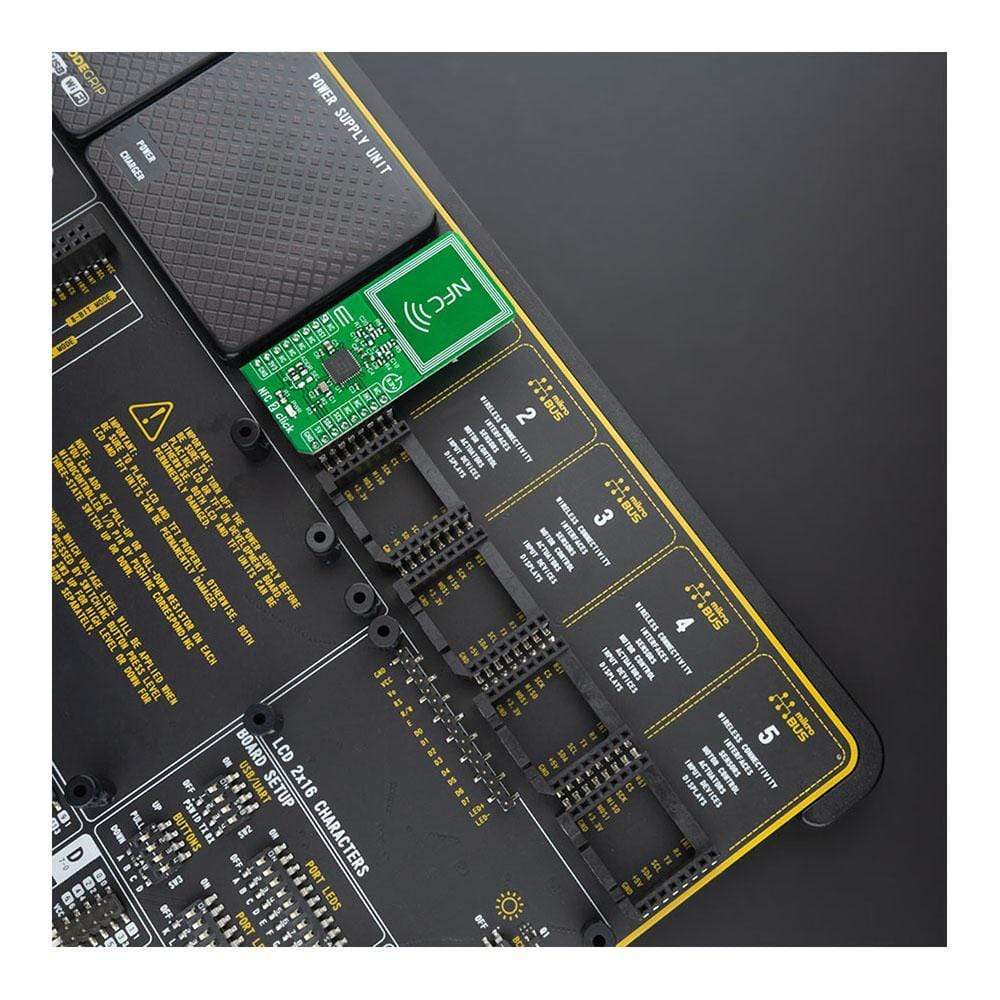
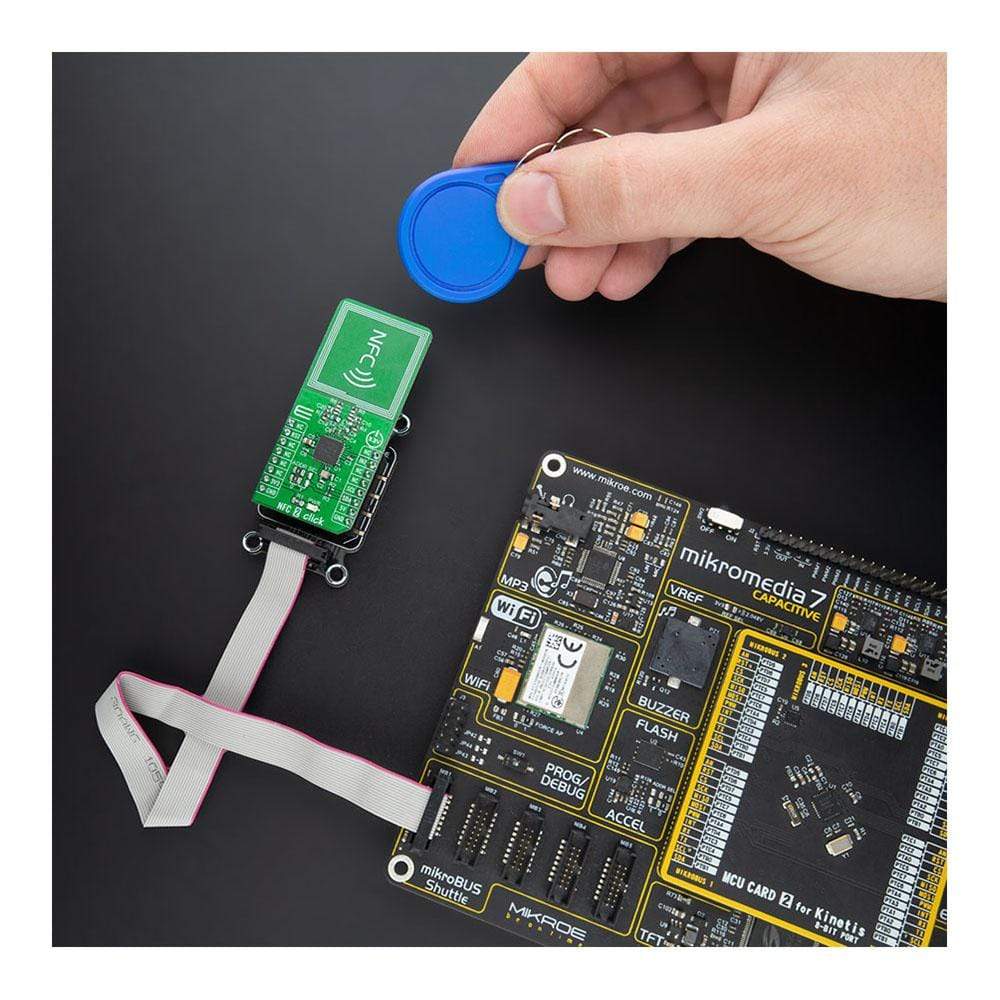
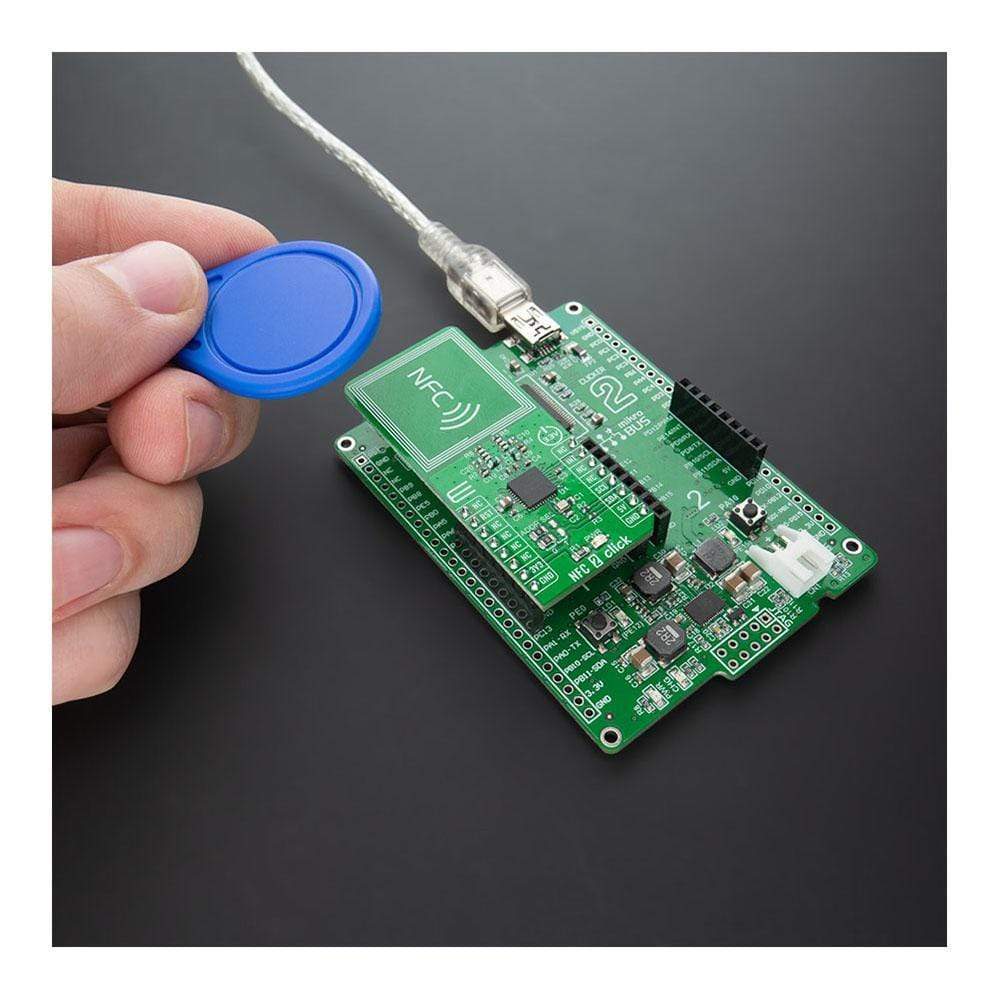
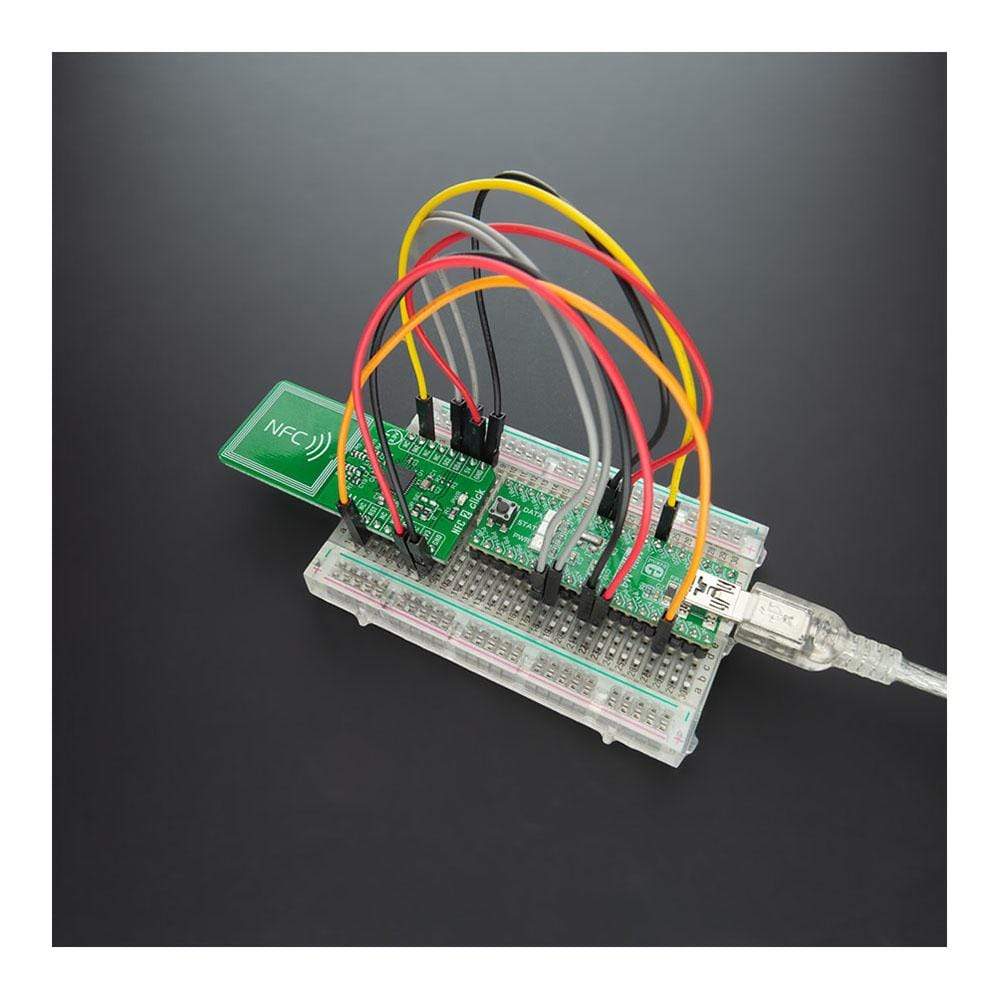
Overview
The NFC 2 Click Board™ is a compact add-on board that contains a highly integrated NFC transceiver for contactless communication. This board features the PN7150, the best plug&play high-performance full NFC solution with integrated firmware and NCI interface designed for contactless communication at 13.56 MHz from NXP USA Inc. This I2C configurable transceiver utilizes an outstanding modulation and demodulation concept completely integrated for different kinds of contactless communication methods and protocols. It can operate both in Reader Mode and in Card Mode. This Click Board™ is the ideal solution for rapidly integrating NFC technology in any application.
The NFC 2 Click Board™ is supported by a mikroSDK compliant library, which includes functions that simplify software development. This Click Board™ comes as a fully tested product, ready to be used on a system equipped with the mikroBUS™ socket.
NOTE: Besides the Click board form factor, Mikroe offers a Dongle version also based on NXP’s PN7150 transceiver.
Downloads
La NFC 2 Click Board™ est une carte complémentaire compacte qui contient un émetteur-récepteur NFC hautement intégré pour la communication sans contact. Cette carte est équipée du PN7150, la meilleure solution NFC complète plug&play hautes performances avec micrologiciel intégré et interface NCI conçue pour la communication sans contact à 13,56 MHz de NXP USA Inc. Cet émetteur-récepteur configurable I2C utilise un concept de modulation et de démodulation exceptionnel entièrement intégré pour différents types de méthodes et de protocoles de communication sans contact. Il peut fonctionner à la fois en mode lecteur et en mode carte. Cette Click Board™ est la solution idéale pour intégrer rapidement la technologie NFC dans n'importe quelle application.
La carte NFC 2 Click Board™ est prise en charge par une bibliothèque compatible mikroSDK, qui comprend des fonctions qui simplifient le développement logiciel. Cette carte Click Board™ est un produit entièrement testé, prêt à être utilisé sur un système équipé du socket mikroBUS™.
REMARQUE : Outre le format de la carte Click, Mikroe propose une version Dongle également basée sur l'émetteur-récepteur PN7150 de NXP.
| General Information | |
|---|---|
Part Number (SKU) |
MIKROE-4309
|
Manufacturer |
|
| Physical and Mechanical | |
Weight |
0.018 kg
|
| Other | |
Country of Origin |
|
HS Code Customs Tariff code
|
|
EAN |
8606027381294
|
Warranty |
|
Frequently Asked Questions
Have a Question?
Be the first to ask a question about this.

